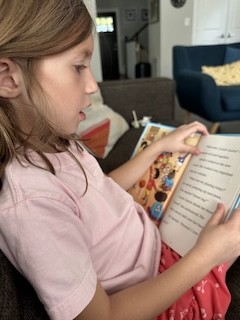| Last week I explained that it makes sense to organize instruction in ways that allots time to learning goals—rather than to instructional activities. It is not that teachers don’t need activities, just that activities don’t have a one-to-one relationship with instructional outcomes. That's why approaches like Daily 5 and CAFE are simplistic and don't have an especially powerful relationship with learning. Those approaches get teachers aimed at particular classroom activities, without sufficient attention to the outcomes. How should teachers determine which activities to use towards these essential ends? Research. For example, imagine you required 30 minutes per day for paired reading (an activity). Research indicates that paired reading can be an effective way of teaching fluency so that sounds pretty good. But it is not the only way to teach it: radio reading, echo reading, reading while listening, and repeated reading are all good, too. As are related activities that can help with some aspects of fluency such as sight vocabulary review or reading parsed text (helps with prosody). Wouldn’t it be better to devote the time to developing oral reading fluency and leave the activity choices to the teacher? I indicated that I would devote slices of time to word learning (not word study—that’s an activity), oral reading fluency, reading comprehension, and writing. Why those? Because for every one of those there is research showing that such instruction can improve overall reading achievement. There is also research showing that at least some struggling readers may have a specific learning problem in one of those areas (but not the others). Later, I'll be more specific about these categories as goals, but for now the categories are enough. Increasingly, research is suggesting that oral language development is implicated in reading development. Not yet any studies showing that oral language instruction improves overall reading achievement—but getting closer. Some educators might want to divide classroom literacy instruction by 5, to accommodate that additional goal. Another possibility: many of my colleagues believe it is essential for teachers to motivate; to teach kids to love reading. Again, no research showing much of an impact on overall reading achievement but if you are committed to that outcome, building it into the time structure would be appropriate. I wouldn’t add either of those goals at this time, as I’d wait for the research to make the case. However, whether I stayed to the goals already mentioned or added these, I would still structure the time around the goals and not the activities. It doesn’t make sense to set a self-selected reading time, because this alone is not a very robust response to the motivation goal. I would also stress that this approach calls for set amounts of time devoted to particular goals—not set periods of time. What I mean by that is that it would be okay for a teacher to spend 30 minutes per day teaching vocabulary, but that it wouldn’t have to be done from 9:00-9:30. The point isn’t to fit instruction into boxes, but to ensure students get sufficient amounts of teaching. Thus, a teacher might include a 5-minute vocabulary review at the beginning of the day, a 10-minute vocabulary discussion focusing on connotation during close reading, and a 15-minute direct instruction period with new words in the afternoon. Not as simplistic as CAFÉ or the Daily 5, but sensible in terms of what it takes to successfully teach students to read.
|

-The-script.jpg)





Comments
See what others have to say about this topic.